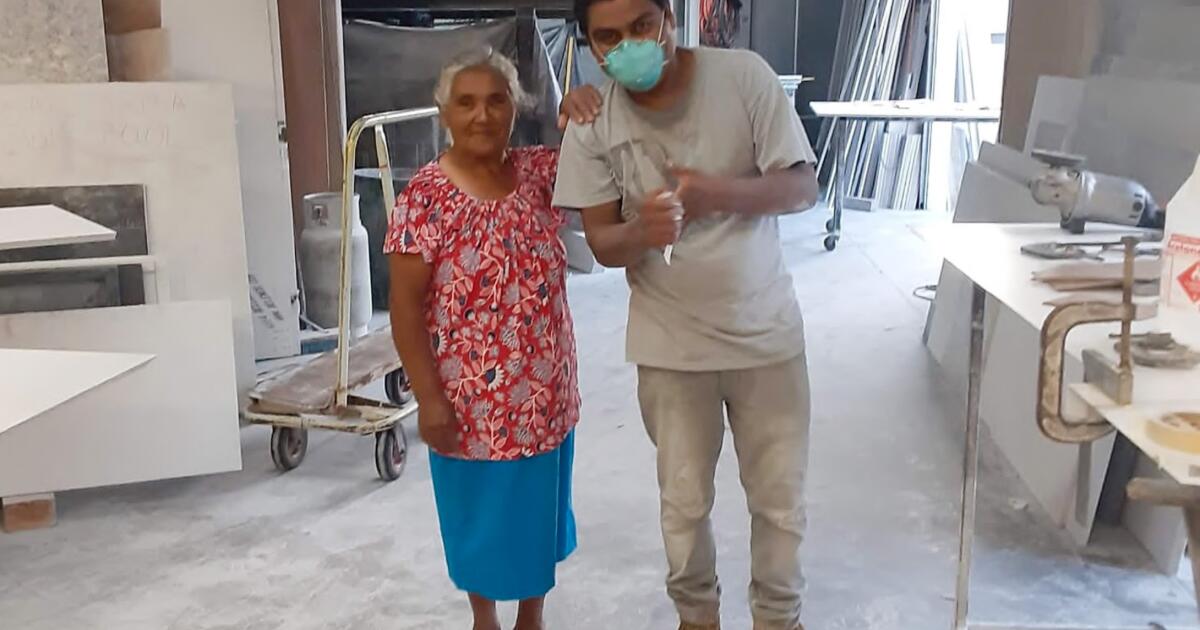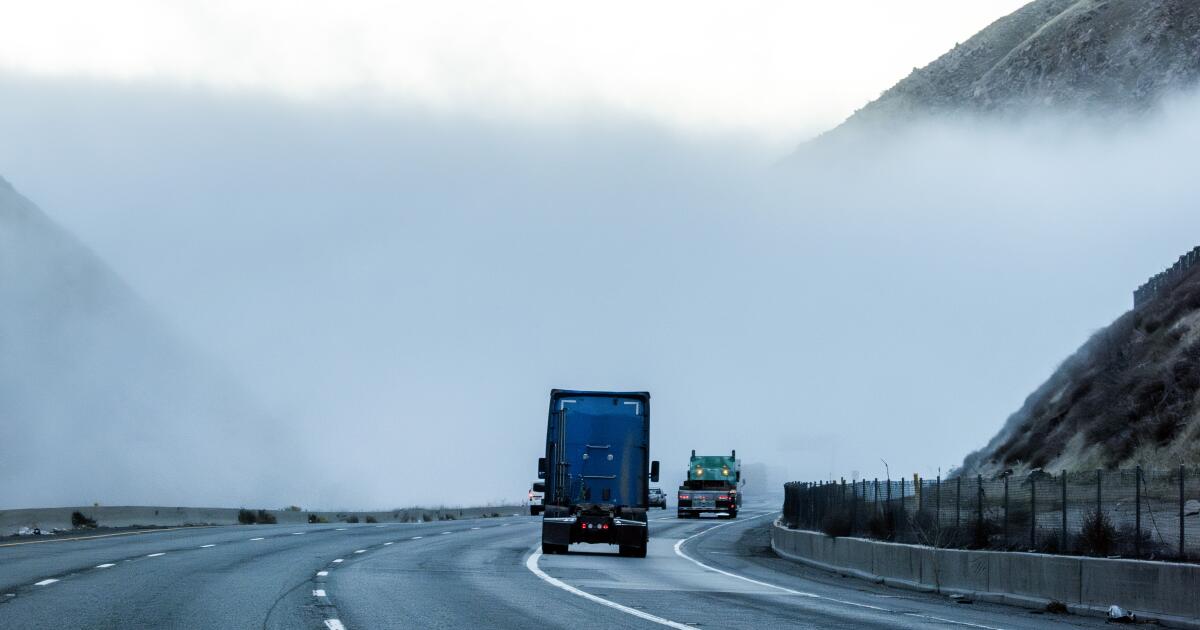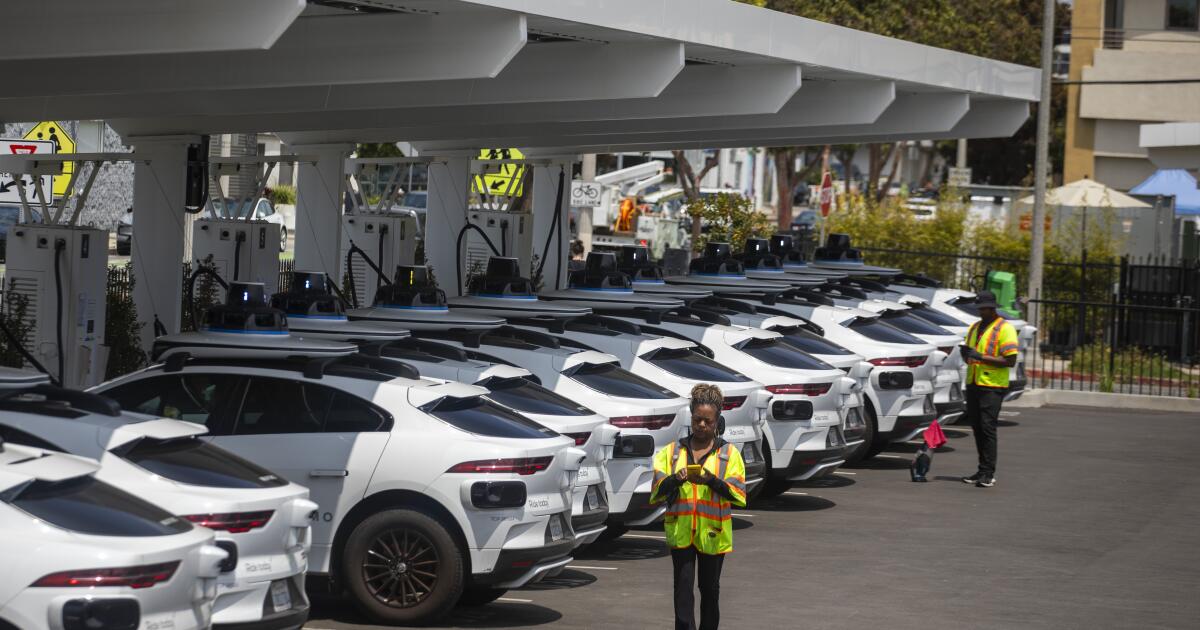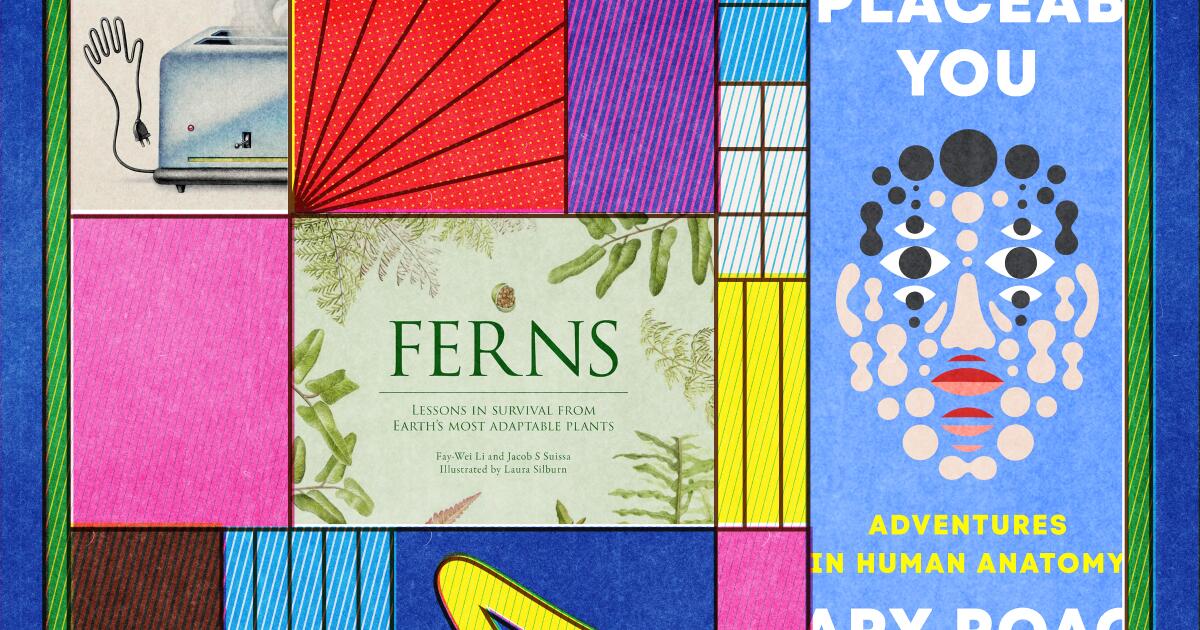Science
Jury finds stone companies at fault in lawsuit by countertop cutter sick with silicosis

A Los Angeles County jury found businesses that make or distribute engineered stone at fault Wednesday for the suffering of a 34-year-old stonecutter afflicted with an incurable disease.
In a decision watched closely by silicosis experts and the stone industry, jurors deliberating at Stanley Mosk Courthouse in downtown L.A. decided largely in favor of Gustavo Reyes Gonzalez, who was diagnosed with silicosis and had to undergo a double lung transplant after years of cutting engineered stone countertops.
The decision followed deliberations that spanned five days of the multi-week trial. Before the verdict, the two sides in the case had agreed that economic losses for Reyes Gonzalez exceeded $8 million.
The jury decided that other damages — which could include physical pain, mental suffering and emotional distress — amounted to more than $44 million. However, because the jury did not deem the defendants wholly responsible for those damages, they will not be collectively liable for the full amount.
It concluded that Caesarstone USA bore 15% of the responsibility, Cambria 10% and Color Marble 2.5%. The court will ultimately determine how much each defendant must pay.
Reyes Gonzalez is among scores of California countertop cutters who have sued companies like Caesarstone and Cambria after falling ill with silicosis, which is caused by inhaling tiny particles of crystalline silica.
His case was the first to go to trial, according to his attorneys. It tested whether companies that manufacture or distribute slabs of artificial stone, commonly marketed as quartz, could be held responsible for the ravages of silicosis, an ancient disease now emerging among countertop cutters barely in middle age.
Scientists have linked the eruption of silicosis cases among stonecutters to the booming popularity of engineered stone, which is typically much higher in lung-scarring silica than natural stone such as granite or marble. In California, more than a dozen countertop cutters have died of silicosis in recent years. In a recent study of the emerging cases and fatalities, researchers found the median age at death was 46.
Attorneys for Reyes Gonzalez argued that the companies had failed to provide sufficient warning about the dangers of cutting the slabs and that the risks far outweighed the benefits of their products. Gilbert Purcell, one of his lawyers, told the jury that engineered stone has “nasty, nasty risks” that had not been properly disclosed.
“A company should never needlessly cause risk to others,” Purcell said, “and that’s what they did.”
For instance, Purcell argued, Cambria had failed for a decade and a half to warn that silica dust could be an invisible hazard. How can workers avoid breathing dust, he argued, “when you can’t even know you’re breathing it because it’s invisible?”
A cloud of dust envelops a countertop fabricator cutting engineered stone at a Sun Valley shop last year.
(Brian van der Brug / Los Angeles Times)
Lawyers representing companies that make or distribute engineered stone argued that the operators of the Orange County workshops where Reyes Gonzalez worked were to blame. If they had used the proper protections, he would not have gotten silicosis, said Peter Strotz, an attorney representing Caesarstone USA.
“They knew what they had to do. They didn’t do it. … Worst of all, they deceived Mr. Reyes Gonzalez. They led him to believe he would be protected when he was not,” Strotz told the jury. He argued Caesarstone USA had done its part by providing safety information and should not be blamed for the “misuse” of its products.
Cambria attorney Lindsay Weiss said the company had provided warnings, including labels on the slabs themselves, and offered free training to the “fabricators” who cut, grind and polish the material to shape it into countertops.
She held up a sample of its quartz surfacing material to the jury, telling them it was safe. “The problem is when people don’t follow the law when they handle this product,” Weiss said.
And Color Marble, a distributor, argued there was no proof that Reyes Gonzalez had cut or polished slabs sold by its company. The jury found Color Marble liable for negligence — as it did Caesarstone USA and Cambria — but did not deem it liable for other claims for product liability as it had for those firms.
The lawsuit initially targeted a long list of companies, but all but three — Caesarstone USA, Cambria and Color Marble — were dismissed or settled before the jury reached a verdict. Attorney James Nevin, who represents Reyes Gonzalez, said most had “resolved the case pursuant to confidential agreements.”
Strotz, representing Caesarstone USA, declined to comment on the verdict.
Weiss said her client, Cambria, disagreed with the decision. “We think this is not a product issue. It’s a workplace safety issue,” she said. “This is handled safely every single day.”
Raphael Metzger, one of the attorneys representing Reyes Gonzalez, called the decision “a win for public health and occupational safety.”
He grew emotional as he praised the jurors for their work. “Only in America,” he said, “can Hispanic immigrants come here and receive justice — as they have.”
The trial, which stretched more than a month, spotlighted the dangers facing workers like Reyes Gonzalez, who testified that he came to the U.S. from the Mexican state of Veracruz as a teenager to escape poverty. For years, he worked from morning to evening cutting slabs for countertops.
Dust was rampant in the Orange County workshops where he labored, Reyes Gonzalez testified, at times so much that it looked like fog. His mask would grow filthy. Even when he used water while cutting, he said, “a lot of dust would come off” when the liquid had dried.
His wife, Wendy Torres Hernandez, said that when Reyes Gonzalez got his diagnosis, he called her crying. “He was told that there was no cure for it. There was nothing that he could do,” she said.
“I told him we would figure something out to help him, because I couldn’t just let him die,” she testified. Despondent, he told her “that he was going to start planning for his funeral.”
Reyes Gonzalez ultimately became so sick that both his lungs needed to be replaced in a transplant. The surgery may afford him only six more years to live before he needs another set of transplanted lungs — and a doctor testified that if that did happen, he would be unlikely to get a third transplant because of his age.
He will have to take a host of medications and carefully monitor his health until he dies. Because of the medicines he takes, Reyes Gonzalez said he cannot have children, which pains him because his wife adores them. Doctors might find a way for them in the future, he said, but cannot guarantee it.
Lawyers for Caesarstone and other companies focused much of their questioning on members of the Silverio family, who paid Reyes Gonzalez for his work in a string of Orange County workshops. When a co-worker named Guillermo Mora de los Santos took the stand, a defense attorney questioned him about whether the Silverio shops had ever provided trainings on workplace safety or had any “silica control program.”
Mora de los Santos said no. “We didn’t know about that — about that disease,” he said about silicosis.
Weiss, representing Cambria, stressed to the jury that Reyes Gonzalez had described sweeping up dry dust and using compressed air to clean — practices that send dust into the air — and that he wasn’t provided with an adequate mask. Nor was water used properly, she said.
In court, one of the Silverios denied having seen safety information from Caesarstone that included a video on silicosis risks, despite having signed a form saying he had received such materials.
Purcell, in his closing remarks, argued that whatever the Silverios had done or not done could not absolve the defendants. “This chain of safety starts with them.”
In its verdict, the jury had the opportunity to assign a percentage of the total responsibility to “others” besides Reyes Gonzalez and the engineered stone companies. Jurors assigned 70% to “others” and 2.5% to Reyes Gonzalez himself.
The Silica Safety Coalition, an industry group that maintains that engineered stone can and should be cut safely, said the 70% fault attributed to “others” was an acknowledgment of the unsafe practices at his workplace.
“We think the California jury was wrong to blame the slab suppliers for any of Mr. Reyes-Gonzalez’s injuries from his unsafe workplace condition, and we anticipate the verdict will be appealed by one or more parties,” the coalition said in a statement.
Juror Laura Miller, who said she disagreed with most of her fellow jurors in finding the companies liable, said after the verdict that she felt the blame lay with the Silverios. To reach their decisions in the civil case, at least nine of 12 jurors had to agree on the verdicts.
“The employer was using no precautions,” Miller said.
Nevin, one of Reyes Gonzalez’s lawyers, said in a statement that the jury had “rightly rejected” efforts to blame “unsophisticated hirers” who had not been warned of the dangers themselves.
His firm, Brayton Purcell LLP, now represents more than 150 countertop cutters with silicosis who labored at more than 350 shops, it said in a statement. “The problem is the products, not the shops.”
Much of the court case revolved around the kinds of measures needed to protect workers from silica dust from engineered stone, as a string of experts testified about the risks of cutting such slabs. Among them was Dr. Kenneth Rosenman, who testified that Reyes Gonzalez got silicosis despite having used some tools that dispense water because they were “not sufficiently protective.”
“They do not lower the dust level low enough to prevent this severe disease,” said Rosenman, chief of the division of occupational and environmental medicine at Michigan State University.
Another witness for the plaintiff, industrial hygienist Stephen Petty, said that N95 masks would be “bottom of the barrel” protection for engineered stone dust. Even the most protective respirators, which use a tank of clean air, are not a “permanent solution” because workers tend to adjust them, breaking the seal, he said.
Defense attorneys turned to other witnesses, including industrial hygienist Brian Daly, who said that engineered stone can be cut and polished safely. Reyes Gonzalez “would not have developed silicosis had his employer had a program that was protective” and followed workplace safety regulations, Daly testified.
Judge William F. Fahey had excluded testimony that attorneys representing Reyes Gonzalez had sought from Georgia Tech scientist Jenny Houlroyd, saying her study was based on data that were not provided to the court, among other issues. Her analysis had concluded that it wasn’t economically feasible to employ the measures needed to safely cut engineered stone, especially for small workshops.
Artificial stone is “a uniquely toxic product,” and neither “wet methods” nor wearing a mask would make it safe to cut and grind, Houlroyd wrote in a prepared list of her opinions.

Science
Video: Engineer Is First Paraplegic Person in Space

new video loaded: Engineer Is First Paraplegic Person in Space
transcript
transcript
Engineer Is First Paraplegic Person in Space
A paraplegic engineer from Germany became the first wheelchair user to rocket into space. The small craft that blasted her to the edge of space was operated by Jeff Bezos’ company Blue Origin.
-
Capsule touchdown. There’s CM 7 Sarah Knights and Jake Mills. They’re going to lift Michi down into the wheelchair, and she has completed her journey to space and back.

December 21, 2025
Science
This City’s Best Winter Show Is in Its Pitch-Dark Skies

The result is a starry sky visible even from the heart of the city. Flagstaff’s Buffalo Park, just a couple miles from downtown, measures about a 4 on the Bortle scale, which quantifies the level of light pollution. (The scale goes from 1, the darkest skies possible, to 9, similar to the light-polluted night sky of, say, New York City. To see the Milky Way, the sky must be below a 5.)
Science
Social media users in the Central Valley are freaking out about unusual fog, and what might be in it

A 400-mile blanket of fog has socked in California’s Central Valley for weeks. Scientists and meteorologists say the conditions for such persistent cloud cover are ripe: an early wet season, cold temperatures and a stable, unmoving high pressure system.
But take a stroll through X, Instagram or TikTok, and you’ll see not everyone is so sanguine.
People are reporting that the fog has a strange consistency and that it’s nefariously littered with black and white particles that don’t seem normal. They’re calling it “mysterious” and underscoring the name “radiation” fog, which is the scientific descriptor for such natural fog events — not an indication that they carry radioactive material.
An X user with the handle Wall Street Apes posted a video of a man who said he is from Northern California drawing his finger along fog condensate on the grill of his truck. His finger comes up covered in white.
“What is this s— right here?” the man says as the camera zooms in on his finger. “There’s something in the fog that I can’t explain … Check y’all … y’all crazy … What’s going on? They got asbestos in there.”
Another user, @wesleybrennan87, posted a photo of two airplane contrails crisscrossing the sky through a break in the fog.
“For anyone following the dense Tule (Radiation) fog in the California Valley, it lifted for a moment today, just to see they’ve been pretty active over our heads …” the user posted.
Scientists confirm there is stuff in the fog. But what it is and where it comes from, they say, is disappointingly mundane.
The Central Valley is known to have some of the worst air pollution in the country.
And “fog is highly susceptible to pollutants,” said Peter Weiss-Penzias, a fog researcher at UC Santa Cruz.
Fog “droplets have a lot of surface area and are suspended in the air for quite a long time — days or weeks even — so during that time the water droplets can absorb a disproportionate quantity of gasses and particles, which are otherwise known as pollutants,” he said.
He said while he hasn’t done any analyses of the Central Valley fog during this latest event, it’s not hard to imagine what could be lurking in the droplets.
“It could be a whole alphabet soup of different things. With all the agriculture in this area, industry, automobiles, wood smoke, there’s a whole bunch” of contenders, Weiss-Penzias said.
Reports of the fog becoming a gelatinous goo when left to sit are also not entirely surprising, he said, considering all the airborne biological material — fungal spores, nutrients and algae — floating around that can also adhere to the Velcro-like drops of water.
He said the good news is that while the primary route of exposure for people of this material is inhalation, the fog droplets are relatively big. That means when they are breathed in, they won’t go too deep into the lungs — not like the particulate matter we inhale during sunny, dry days. That stuff can get way down into lung tissue.
The bigger concern is ingestion, as the fog covers plants or open water cisterns, he said.
So make sure you’re washing your vegetables, and anything you leave outside that you might nosh on later.
Dennis Baldocchi, a UC Berkeley fog researcher, agreed with Weiss-Penzias’ assessment, and said the storm system predicted to move in this weekend will likely push the fog out and free the valley of its chilly, dirty shawl.
But, if a high pressure system returns in the coming weeks, he wouldn’t be surprised to see the region encased in fog once again.
-

 Iowa1 week ago
Iowa1 week agoAddy Brown motivated to step up in Audi Crooks’ absence vs. UNI
-

 Iowa1 week ago
Iowa1 week agoHow much snow did Iowa get? See Iowa’s latest snowfall totals
-

 Maine6 days ago
Maine6 days agoElementary-aged student killed in school bus crash in southern Maine
-

 Maryland1 week ago
Maryland1 week agoFrigid temperatures to start the week in Maryland
-

 New Mexico6 days ago
New Mexico6 days agoFamily clarifies why they believe missing New Mexico man is dead
-

 South Dakota1 week ago
South Dakota1 week agoNature: Snow in South Dakota
-

 Detroit, MI1 week ago
Detroit, MI1 week ago‘Love being a pedo’: Metro Detroit doctor, attorney, therapist accused in web of child porn chats
-

 Maine6 days ago
Maine6 days agoFamily in Maine host food pantry for deer | Hand Off

















